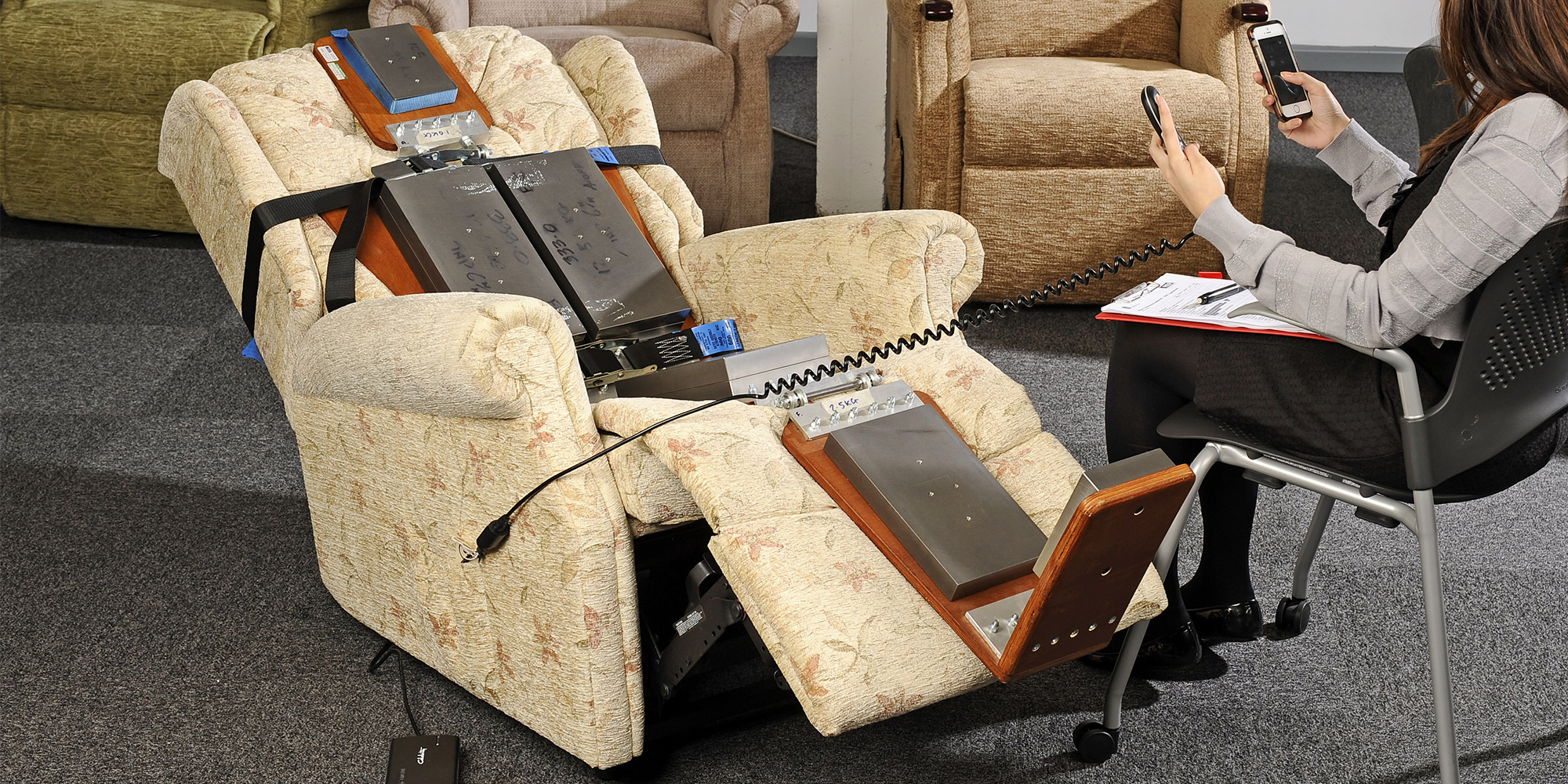BS EN 1021-1 Ignitability Testing of Recliners with Smouldering Cigarette
The BS EN 1021-1 standard is an essential requirement for manufacturers and suppliers in the furniture industry, particularly those involved in the production of recliners and other adjustable seating. This test evaluates the ignition resistance of furniture to smouldering cigarette embers, ensuring that products meet stringent safety criteria.
The test procedure involves placing a smouldering cigarette on the fabric or upholstery of the recliner for a specified duration. The objective is to determine whether the material ignites and spreads flames under controlled conditions. This type of testing is crucial for compliance with fire safety regulations, particularly in public spaces and residential environments.
During this test, it’s important to note that the specimen must be prepared according to the specified dimensions and orientation as per the standard. The test apparatus includes a specialized chamber designed to simulate real-world conditions while ensuring accurate results. After placing the smouldering cigarette on the specimen, the sample is observed for any signs of ignition or flame propagation.
The acceptance criteria for this test are stringent and are based on international standards such as BS EN 1021-1:2009+A1:2014. According to these guidelines, a product passes the test if there is no ignition and no flaming within one meter of where the cigarette was placed after five minutes. This ensures that furniture products are safe from accidental ignition by smouldering cigarettes.
For manufacturers and suppliers in this sector, compliance with BS EN 1021-1 testing can significantly enhance brand reputation and consumer trust. It demonstrates a commitment to safety standards and helps avoid potential legal issues related to product liability. Additionally, it provides peace of mind for consumers who use furniture in environments where there is a risk of accidental ignition.
Manufacturers must ensure that their products undergo rigorous testing to meet these stringent requirements. This process involves careful specimen preparation, adherence to test procedures, and thorough documentation of results. Compliance with BS EN 1021-1 not only ensures product safety but also facilitates smoother market entry into regions where this standard is mandatory.
In summary, the BS EN 1021-1 ignitability testing for recliners with smouldering cigarettes is a critical step in ensuring fire safety. It helps manufacturers produce products that meet international standards and enhances consumer confidence in furniture safety. By adhering to this test protocol, companies can protect themselves against potential risks while contributing positively to public health and safety.
Why Choose This Test
The BS EN 1021-1 ignitability test is a vital component of the furniture industry's quality assurance process, particularly for recliners and other adjustable seating. This test ensures that products are safe from accidental ignition by smouldering cigarettes, which can lead to serious fires if not adequately managed.
One significant advantage of this test is its ability to identify potential fire hazards early in the manufacturing process. By subjecting specimens to controlled conditions simulating real-world scenarios, manufacturers gain valuable insights into how their products perform under stress. This information allows for timely adjustments and improvements, reducing the risk of product recalls or safety issues post-launch.
Another key benefit is enhanced consumer confidence. As fire safety is a top concern for consumers, especially in public spaces like office buildings and hotels, having products that pass this rigorous test can significantly boost brand reputation. This trust translates into increased sales and market share, making compliance with such standards a strategic business decision.
Furthermore, passing the BS EN 1021-1 ignitability test ensures regulatory compliance, which is crucial for international markets where stringent fire safety regulations are in place. Meeting these standards not only opens doors to new markets but also helps avoid costly penalties and legal disputes associated with non-compliance.
Lastly, the test provides a clear benchmark against which manufacturers can measure their products' performance consistently. This consistency is essential for maintaining high-quality standards across all production batches, ensuring uniformity in product safety and quality.
Environmental and Sustainability Contributions
The BS EN 1021-1 ignitability test plays a crucial role not only in ensuring fire safety but also in promoting environmental sustainability within the furniture industry. By reducing the risk of accidental fires, this standard helps prevent unnecessary waste associated with product recalls or damage from fires.
Manufacturers who comply with these standards are contributing to overall environmental protection by minimizing the carbon footprint related to manufacturing and transportation processes. When products meet stringent safety criteria like those outlined in BS EN 1021-1, there is less likelihood of premature disposal due to fire-related incidents. This extends product life cycles, reduces resource consumption, and lowers energy usage throughout the supply chain.
Additionally, compliance with international standards such as BS EN 1021-1 fosters innovation in sustainable materials and manufacturing techniques. Companies are encouraged to explore eco-friendly options that not only meet fire safety requirements but also contribute positively to environmental conservation efforts.
The test’s focus on preventing accidental ignition also promotes responsible consumer behavior, encouraging individuals to take necessary precautions when using furniture products. This collective effort towards safer practices contributes significantly to reducing the overall carbon footprint and promoting sustainable living habits.
Use Cases and Application Examples
- Home Furniture Manufacturers: Ensuring that all recliners and adjustable seating meet fire safety standards before distribution.
- Hotel Chains: Verifying the ignitability resistance of furniture used in public areas to comply with local regulations.
- Office Furniture Suppliers: Demonstrating product safety for use in shared office spaces where there may be a higher risk of smouldering cigarettes.
- Schools and Universities: Providing safe furniture for student and staff use, ensuring compliance with fire safety regulations.
- Healthcare Facilities: Ensuring that all seating in hospitals and clinics is free from ignition risks to protect patients and staff.





